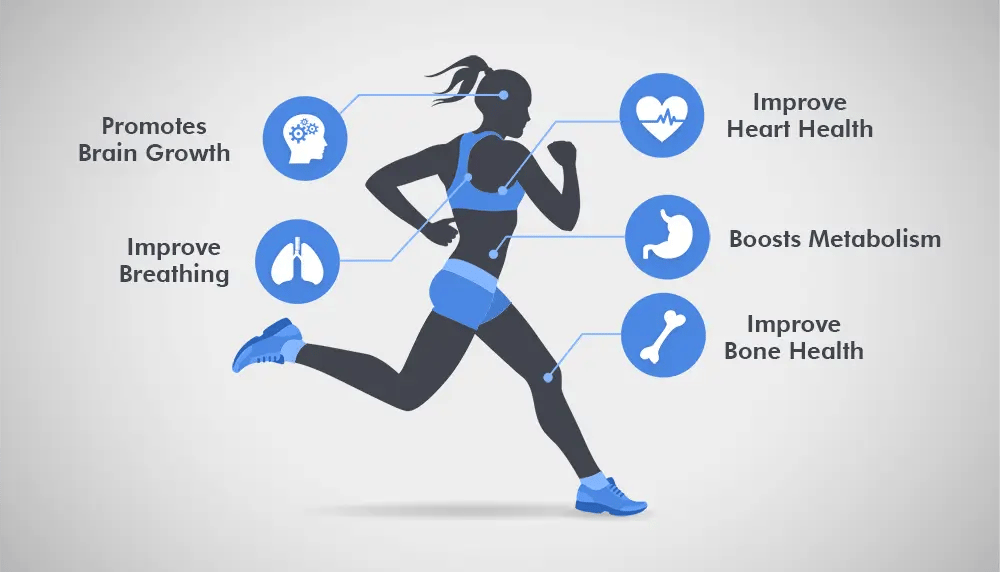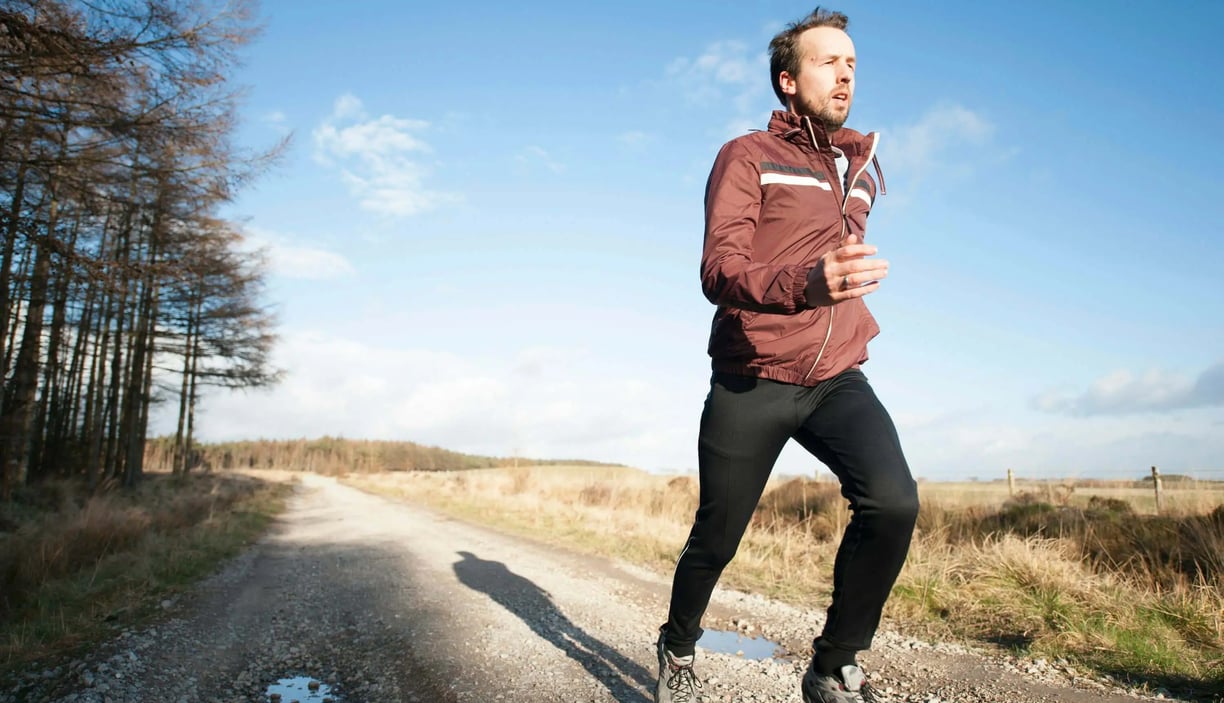Must-Try Strength Exercises for Runners in 2025
Strength exercises for runners are the key to improving performance and preventing injuries in 2025. This guide covers essential workouts to boost endurance, build muscle, and optimize your running game. Whether you're a beginner or a pro, these exercises will help you reach your goals. Read on for expert tips and techniques!
RUNNING


Why Strength Training is Vital for Runners?
Imagine feeling stronger, faster, and more confident with every step you take. That’s the magic of strength exercises for runners.
These exercises protect your body from injuries that could stop you from doing what you love—running.
By focusing on building key muscles and a stable core, strength exercises for runners help you go the extra mile with less effort.
They also improve your balance and stability, keeping you steady on tough terrain or during long races.
Incorporating strength exercises into your routine makes running easier and more enjoyable, giving you the edge to reach your goals.


Benefits of Strength Training for Runners
Strength training for runners offers a wide range of benefits that can take your running to the next level.
Improves Running Efficiency
Strength training makes your muscles stronger and more efficient, helping you use less energy with every step.
This means you can run longer and feel less tired during your workouts.
Enhances Speed and Endurance
Building muscle strength improves your ability to push off the ground with more power, helping you run faster.
Over time, it also boosts your stamina, so you can maintain your pace for longer distances.
Reduces Risk of Injuries
Strength exercises for runners strengthen the muscles and joints most prone to injury, like knees and ankles.
A stronger body is better equipped to handle the impact and stress of running.
Strengthens Core for Stability
A strong core keeps your body stable and balanced, especially during long runs or on uneven terrain.
It also improves your posture, reducing strain on your back and legs.


Key Muscles to Focus On
To get the most out of strength exercises for runners, it’s important to focus on the muscles that support and power your runs.
Glutes: The Powerhouse for Runners
Your glutes are the largest and strongest muscles in your body, providing the power needed to propel you forward.
Strong glutes also help stabilize your hips, reducing the risk of injuries during runs.
Hamstrings and Quadriceps: The Forward Drive
These muscle groups work together to drive your legs forward and keep your movements smooth and efficient.
Strong hamstrings and quads are essential for handling hills and preventing muscle imbalances.
Core: Stability and Balance
A strong core keeps your body stable, allowing you to maintain proper running form even as you tire.
It also helps reduce strain on your back and legs, preventing injuries caused by poor posture.
Calves: The Push-Off Power
Your calves are key to generating the push-off force that propels you forward with every stride.
Strong calves also help absorb impact, reducing the strain on your ankles and knees.


Jenny Hill // Unplash
Top Strength Exercises for Runner
Ready to take your running to the next level? The right strength exercises for runners can boost your speed, endurance, and injury prevention.
Squats
Squats target your glutes, quads, and hamstrings, building the power you need for a strong and efficient stride. They also improve your overall balance and stability.
Lunges
Lunges strengthen your legs individually, helping to correct muscle imbalances while improving your stability and range of motion.
Step-Ups
Step-ups mimic the motion of running uphill, building strength in your quads and glutes while enhancing your balance and coordination.
Core Strengthening Exercises
Plank Variations (Front Plank, Side Plank)
Planks engage your core, shoulders, and back, helping you maintain good running posture and stability during long runs.
Dead Bugs
Dead bugs strengthen your core while teaching your body to stabilize during movement, which is key for efficient running form.
Russian Twists
Russian twists target your obliques, improving rotational strength and balance, which are essential for running on uneven terrain.
Upper Body Strength Exercises
Push-Ups
Push-ups build strength in your chest, shoulders, and arms, helping you maintain proper posture and arm drive while running.
Pull-Ups
Pull-ups develop your upper back and arm strength, improving your ability to stay upright and reduce fatigue during long runs.
Dumbbell Rows
Dumbbell rows strengthen your back and shoulders, helping you maintain a balanced and efficient running form.


Workout Plan for Runners
Looking to boost your running game? A solid workout plan with strength exercises for runners is key to improving performance and staying injury-free.
Beginner Strength Routine (2x Per Week)
As a beginner, start with simple exercises that target the key muscles for runners. Aim for 2 strength training sessions per week to allow your body time to recover. Here are 5–6 beginner-friendly exercises:
Squats – 3 sets of 10-12 reps: Focus on proper form and depth.
Lunges – 3 sets of 10 reps per leg: Perform slowly to engage the muscles.
Plank – 3 sets, holding for 20-30 seconds: Focus on maintaining a straight line from head to heels.
Step-Ups – 3 sets of 10 reps per leg: Use a bench or box to step onto for added challenge.
Push-Ups – 3 sets of 8-10 reps: Keep your core engaged and elbows at a 45-degree angle.
Intermediate Strength Routine (3x Per Week)
For those at an intermediate level, it's important to add variety and increase intensity. Aim for 3 sessions a week, incorporating progressive overload to build strength. Consider these variations:
Squat Variations (Goblet Squats or Bulgarian Split Squats) – 4 sets of 8-10 reps: Increase the weight as you get stronger.
Walking Lunges with Dumbbells – 4 sets of 12 reps per leg: Hold a pair of dumbbells to add resistance.
Side Planks with Leg Raises – 3 sets of 20-30 seconds per side: Add leg raises to target the glutes and core.
Step-Ups with Dumbbells – 4 sets of 10 reps per leg: Use heavier dumbbells to increase the challenge.
Push-Ups with Added Resistance (Weighted Vest or Plate) – 3 sets of 8-10 reps: This will help progressively overload your chest and arms.
By gradually increasing weight or reps, you'll continue to build strength while preventing plateaus.


Common Mistakes to Avoid
Don’t let these mistakes hold you back from reaching your running goals!
Neglecting Form and Technique
Neglecting proper form during strength exercises for runners can lead to serious injury and slow your progress.
Focusing on controlled movements and correct posture is essential, especially when lifting weights or doing bodyweight exercises.
Proper technique will not only help you avoid injury but also maximize the effectiveness of each exercise.
Overtraining and Skipping Rest Days
Overtraining without enough rest can cause muscle fatigue, burnout, and increase the risk of injury.
Rest days are crucial for muscle recovery, as this is when your muscles rebuild and become stronger.
Make sure to schedule at least one or two rest days a week to allow your body the time it needs to recover and perform at its best.
Not Balancing Strength Training with Running
Focusing too much on either strength training or running can negatively impact your overall performance.
Strength exercises for runners should complement your running routine to prevent injury and improve speed.
Balancing both will help you build endurance, increase efficiency, and reduce the risk of overuse injuries.


Ambitious Studio* | Rick Barrett // Unplash
Finding the right balance between running and strength exercises for runners can feel tricky, but it's totally doable with some planning.
Neglecting Form and Technique
Neglecting proper form during strength exercises for runners can lead to serious injury and slow your progress.
Focusing on controlled movements and correct posture is essential, especially when lifting weights or doing bodyweight exercises.
Proper technique will not only help you avoid injury but also maximize the effectiveness of each exercise.
Overtraining and Skipping Rest Days
Overtraining without enough rest can cause muscle fatigue, burnout, and increase the risk of injury.
Rest days are crucial for muscle recovery, as this is when your muscles rebuild and become stronger.
Make sure to schedule at least one or two rest days a week to allow your body the time it needs to recover and perform at its best.
Not Balancing Strength Training with Running
Focusing too much on either strength training or running can negatively impact your overall performance.
Strength exercises for runners should complement your running routine to prevent injury and improve speed.
Balancing both will help you build endurance, increase efficiency, and reduce the risk of overuse injuries.


Jack Atkinson // Unplash
Additional Tips for Success
Want to make the most of your strength exercises for runners? Here are some extra tips to help you stay on track.
Use Proper Footwear for Strength Exercises
Wearing the right shoes isn’t just for running—it’s equally important during strength exercises. Proper footwear provides the support and stability needed to perform movements safely and effectively.
Invest in shoes with good grip and cushioning to prevent slips and reduce impact on your joints.
Warm-Up and Cool Down Appropriately
Skipping a warm-up is like starting a car without letting it warm up—it can lead to strains or injuries. A simple 5-10 minute warm-up increases blood flow and preps your muscles for the workout ahead.
Cooling down with stretches after your session helps ease muscle tension and aids recovery, so you feel less sore.
Track Progress for Motivation
Tracking your workouts isn’t just about numbers; it’s about seeing your growth over time. Write down the exercises, sets, reps, and weights you use to measure improvements and keep yourself motivated.
Celebrating small wins, like adding an extra rep or using a heavier weight, can keep you excited about reaching your goals.
How to Integrate Strength Training into Your Running Routine


Miquel Parera // Unplash
Frequently Asked Questions (FAQs)
What strength training is best for runners?
The best strength training for runners focuses on building lower body, core, and upper body strength.
Exercises like squats, lunges, planks, and push-ups help improve running performance and prevent injuries.
Adding resistance with weights or bands can also make your muscles stronger and more efficient.
Use Proper Footwear for Strength Exercises
Wearing the right shoes isn’t just for running—it’s equally important during strength exercises. Proper footwear provides the support and stability needed to perform movements safely and effectively.
Invest in shoes with good grip and cushioning to prevent slips and reduce impact on your joints.
Is jogging a strength exercise?
Jogging is not considered a strength exercise; it is primarily a cardiovascular workout.
While it can help build endurance and stamina, jogging does not specifically target or strengthen muscles like traditional strength training exercises do.
To complement jogging, include exercises like squats, lunges, and planks to improve muscle strength and running performance.
Should runners lift heavy or light?
Runners should lift both heavy and light weights, depending on their goals.
Lifting heavier weights with fewer reps builds strength and power, which can improve speed and endurance.
Light weights with more reps are great for building muscle endurance and improving overall stability, which helps prevent injuries during long runs.
Use Proper Footwear for Strength Exercises
Wearing the right shoes isn’t just for running—it’s equally important during strength exercises. Proper footwear provides the support and stability needed to perform movements safely and effectively.
Invest in shoes with good grip and cushioning to prevent slips and reduce impact on your joints.
Conclusion


Alora Griffiths // Unplash
In conclusion, strength training is essential for runners, helping to improve running efficiency, boost speed and endurance, and reduce injury risks.
By focusing on key muscles like the glutes, hamstrings, core, and calves, runners can enhance stability and power.
Incorporating exercises such as squats, lunges, and planks into your routine will build strength and support your running goals.
A solid plan includes starting with 2 strength sessions per week and progressing to 3 sessions with proper overload techniques.
Avoid mistakes like overtraining and neglecting form to maximize benefits.
By following these tips, you'll become a stronger, more efficient runner while reducing your risk of injury.
